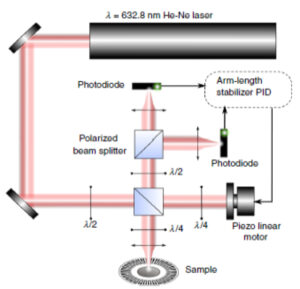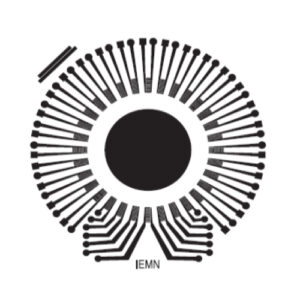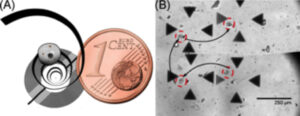List of members |
Facilities |
Internships and jobs |
PhD |
Publications |
News |
Polarized light interferometric assembly for quantitative mapping of surface waves
This assembly was developed as part of a study on the Non-contact handling of fluids and particles using acoustic fields. Surface acoustic waves have a high potential for actuating fluids at the micrometer scale because they can efficiently transmit energy to small fluid samples, control internal flows and manipulate particles using two non-linear effects: radiation pressure and acoustic streaming.
We have developed two methodologies to synthesize complex surface wave fields to obtain a multifunction device: The first method uses an array of 32 interdigitated combs controlled by the inverse filter technique to generate fields on demand. The second solves an inverse problem in order to design a holographic transducer specifically generating the requested field.

Diagram of the Michelson Polarized Interferometer used to scan the displacement field associated with surface acoustic waves.

Optimized array of 32 unidirectional interdigital transducers used for the synthesis of various surface acoustic wave fields (focused, plane, swirling) and droplet manipulation. The central black area is a gold layer used as a mirror for the measurement of the transducer response with the Michelson interferometer.

(A) Principle of acoustic vortex manipulation. The transducer (concentric rings) generates an acoustic vortex that captures the cells.
(B) Observation of the non-contact manipulation of a buccal cell using the acoustic vortex. The chip that generates a vortex is flat and can be easily integrated into a microscope.

